Threshold Transformations: How Your Entryway Seating Adapts to Life’s Meaningful Moments

Threshold Transformations: How Your Entryway Seating Adapts to Life’s Meaningful Moments
The humble entryway—that sliver of space between the outside world and your inner sanctuary—carries more emotional weight than its square footage might suggest. It’s where we shed the day’s armor, where we greet loved ones, and where we take that deep breath that signals “I’m home.” At the center of this transitional space? The often-overlooked entryway seating that silently witnesses life’s comings and goings.
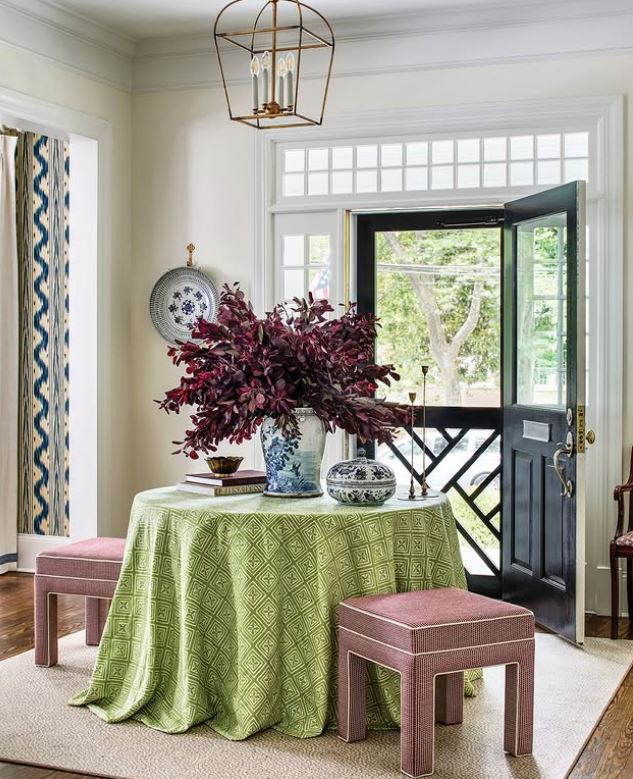
“The entryway isn’t just functional—it’s the opening chapter of your home’s story,” says interior designer Mia Chen. “The right seating here creates both a practical landing spot and sets the emotional tone for the entire house.”
But what makes entryway seating truly exceptional isn’t just how it looks—it’s how it shape-shifts throughout our days and lives, supporting different needs while creating space for genuine connection. Let’s explore how these threshold pieces transform alongside our daily rhythms.
Morning Launch Pad: The Everyday Exit Strategy
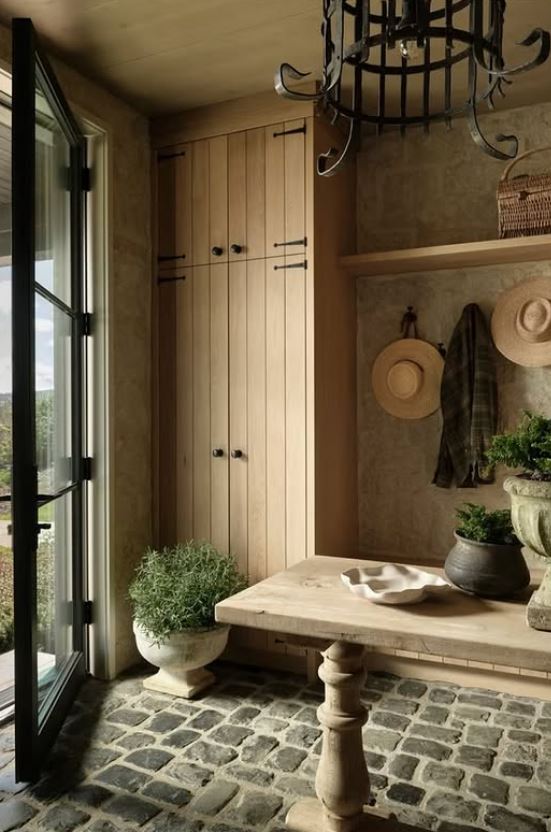
In the rush of weekday mornings, that entryway bench becomes command central. What appears to be a simple wooden perch is actually mission control for the day ahead.
“I designed our entryway specifically for the morning chaos,” laughs Maya Jacks, a mother of three in Portland. “The bench has cubbies underneath for each family member, with a cushioned top where the kids sit to put on shoes while I run through the day’s schedule one last time.”

Designer Tip: Look for seating with built-in organization—hidden compartments for gloves and scarves, hooks for keys, or drawers for dog leashes. A bench with divisions creates natural organization zones for different family members.
“The morning bench is where we have some of our most honest conversations,” Jacks adds. “Something about that transitional moment—half in, half out—creates this strange honesty. My teenager actually talks to me there!”
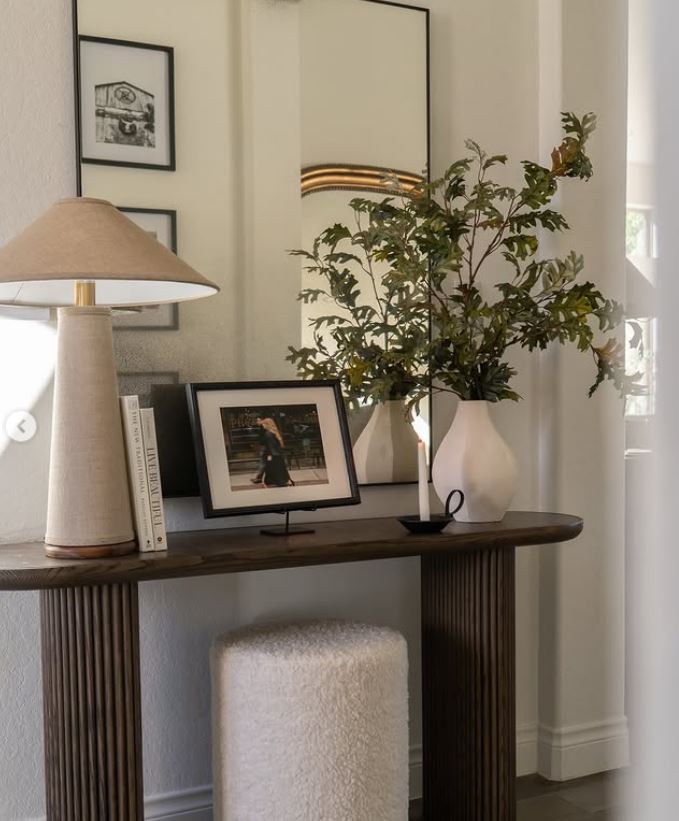
For apartment dwellers, even a narrow console table with a small stool tucked underneath can create this functional morning station. The key is creating a dedicated spot for the essential pause before facing the world.
Midday Movement: The Flexible Transition Space
As the morning rush subsides, entryway seating often transforms to serve entirely different purposes.
“Working from home changed how I use my entry space,” says architect Sam Rivera. “What was once just a place to drop keys became this flex zone throughout the day—a package landing area, a spot to take quick calls without disturbing everyone else, even a place to sit and sort mail that used to pile up on the kitchen counter.”

This midday flexibility demonstrates the hidden value of thoughtful entryway design. A built-in window seat with storage underneath becomes a reading nook during quiet afternoon hours. A pair of compact armchairs creates an impromptu meeting space for the neighbor who stops by with garden clippings to share.
“I added a small side table next to my entryway bench, and suddenly it became this perfect coffee spot,” says Rivera. “There’s something lovely about sitting half in, half out of your space during the day—connected to both the outdoors and the comforts of home.”
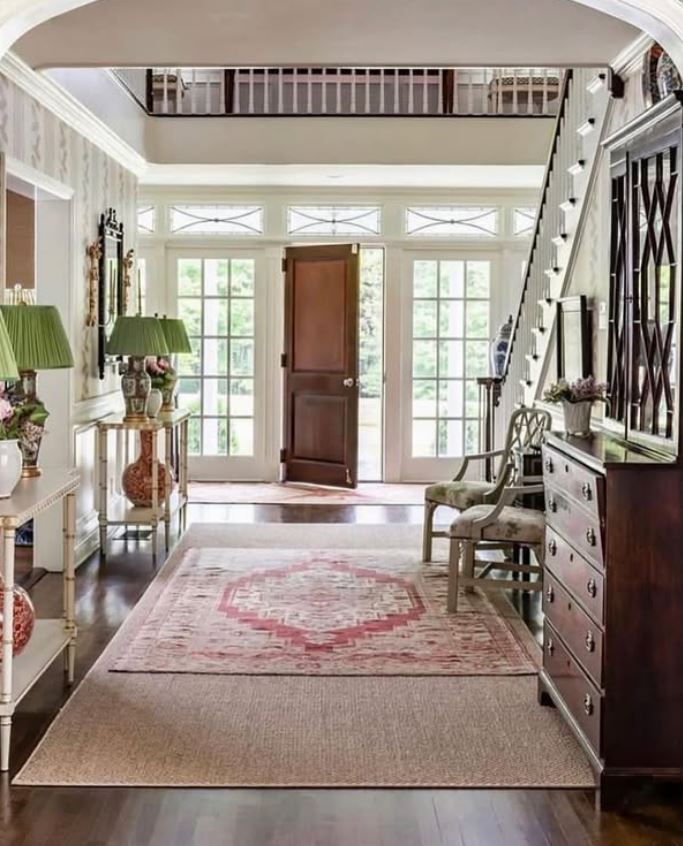
Designer Tip: Choose seating that can handle quick shifts in purpose. A bench with a washable cushion accommodates both muddy gardening breaks and unexpected visitor chats. Small-scale armchairs with stain-resistant fabric offer more comfort than a typical bench but still maintain a compact footprint.
Evening Welcome: The Decompression Chamber
As daylight fades, the entryway transforms yet again—becoming a decompression chamber between work life and home life.
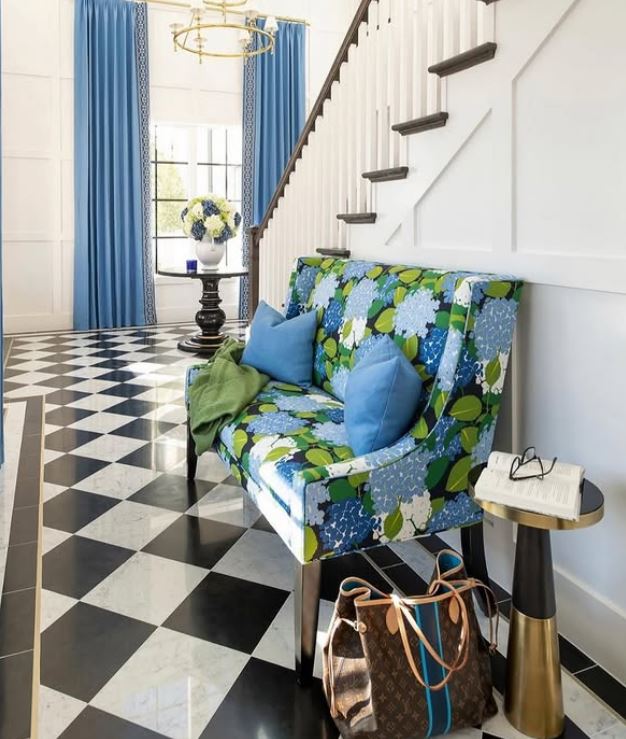
“That transition moment when you first come home sets the tone for your entire evening,” explains wellness architect Leila Patel. “I encourage clients to create entryway seating that invites a mindful pause—a literal ‘sitting space’ between your public and private selves.”
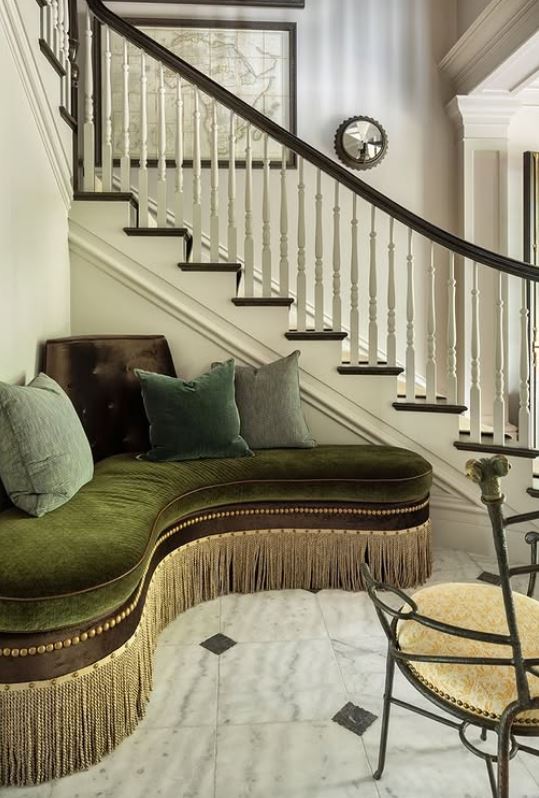
This evening reset looks different in every home. For some, it’s a plush ottoman where they sit to remove work shoes and literally lower their body closer to the ground—a physical reset that signals the workday is done. For others, it’s a chair positioned to frame a view of something beautiful—artwork, a garden glimpse, or simply the familiar gallery wall of family photos.
“We installed a small bench with hooks above it, but what transformed the space was adding an excellent reading light and a small tray for a cup of tea,” says Martin Green, whose Victorian home features a narrow but intentional entry. “Now it’s where I unwind for ten minutes when I get home before joining family chaos. That little ritual completely changed how present I am for dinner.”
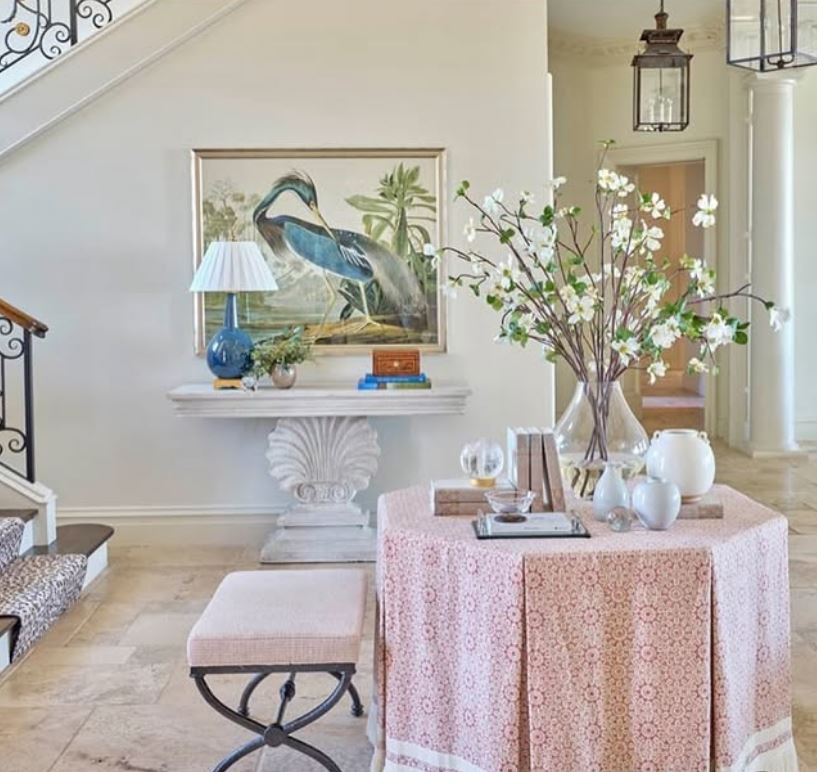
Designer Tip: Consider adding elements that engage multiple senses to your entryway seating area—a small reed diffuser with a signature scent, a texture-rich cushion, or a small bluetooth speaker for a musical transition. These sensory shifts help mark the boundary between outside and in.
Weekend Rhythms: The Gathering Ground
Come weekend, the entryway often transforms into its most social incarnation—a gathering ground for coming adventures or welcome arrivals.
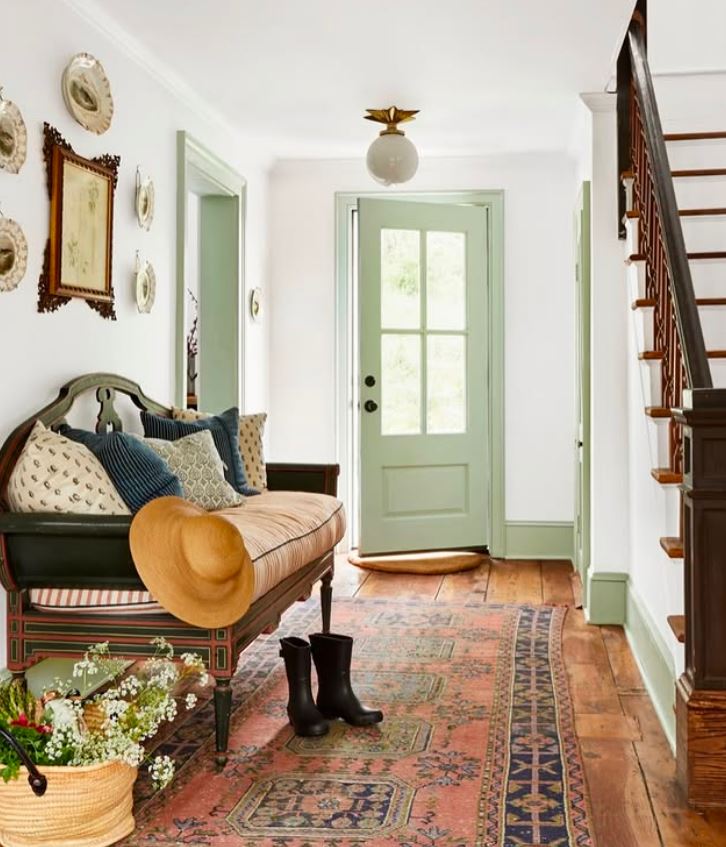
“Our entryway bench becomes command central before family hikes,” says outdoor enthusiast Jamie Adams. “We sit together loading backpacks, checking supplies, tying boots. There’s this buzzy excitement that happens in that space before an adventure.”
This weekend transformation shows how versatile good entryway seating must be—rugged enough for outdoor gear but inviting enough for lingering conversations with arriving dinner guests.
“We chose a deeper bench for our entry specifically because we wanted a space where friends could actually sit and chat while removing boots or waiting for others to arrive,” says Adams. “Some of our best dinner party conversations happen while still half-bundled on that bench.”
Designer Tip: For homes that host frequently, consider entryway seating that can expand when needed. A primary bench with one or two compact stools tucked nearby allows for impromptu gathering without overwhelming daily function.
Seasonal Shifts: The Year-Round Adapter
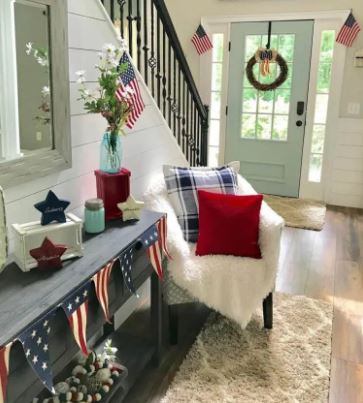
Beyond daily transformations, thoughtful entryway seating also adapts to seasonal needs.
Summer might find your entry bench holding market totes and sun hats, while winter transforms it into a staging area for boots, gloves, and scarves. The cushion that’s wipeable for muddy spring days becomes layered with a wool throw for cozy winter welcomes.
“I swap the cushions and accessories in our entryway with the seasons,” says textile designer Ava Moore. “It’s the easiest way to signal the seasonal shift throughout the home. When guests see the entry has changed, they subconsciously register that the whole house experience has shifted too.”
This seasonal flexibility makes entryway seating a perfect testing ground for design trends you’re curious about but not ready to commit to throughout your home. That bold pattern, experimental color, or new textile can find a temporary home in the entry without overwhelming more permanent spaces.
Making Space for Meaning
Ultimately, the most successful entryway seating creates space for the meaningful moments that happen at thresholds—whether it’s the daily goodbye kiss, the warm welcome home, or the quiet minute alone before facing either world.
“We get so caught up in how things look,” reflects designer Chen, “that we sometimes forget to design for how life actually unfolds in these transition spaces. The most beautiful entryway bench is the one where your child actually wants to sit and tell you about their day.”
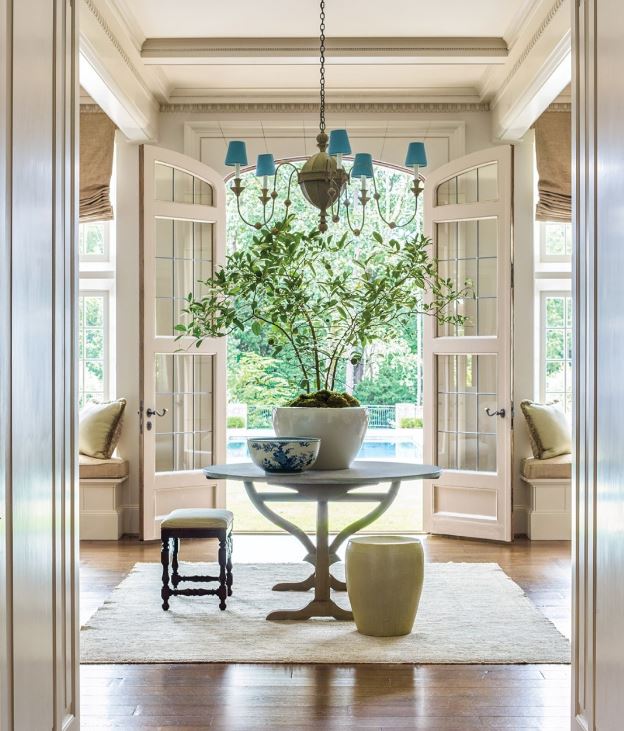
As you consider your own threshold transformation, think beyond mere function. Yes, you need somewhere to put on shoes—but you’re also creating the space where welcomes happen, where goodbyes are exchanged, and where home begins. That humble bench or chair isn’t just furniture; it’s the physical foundation for the small but significant moments that, strung together, make up a well-lived life.
